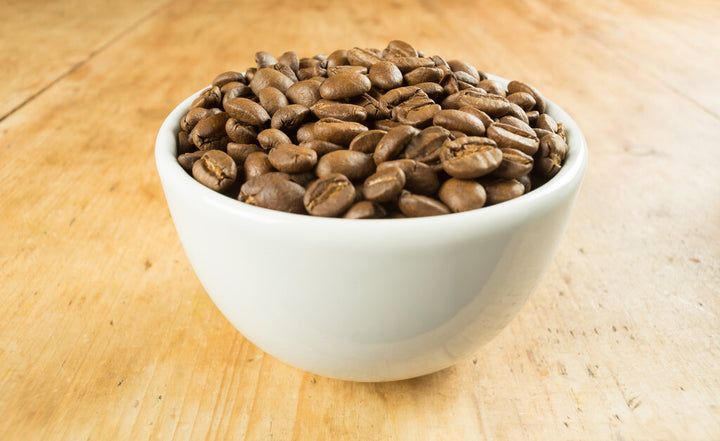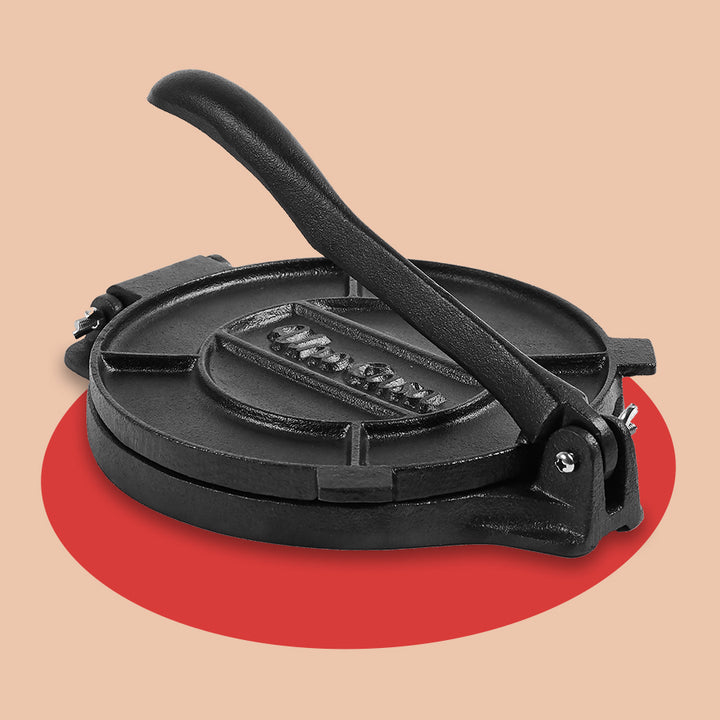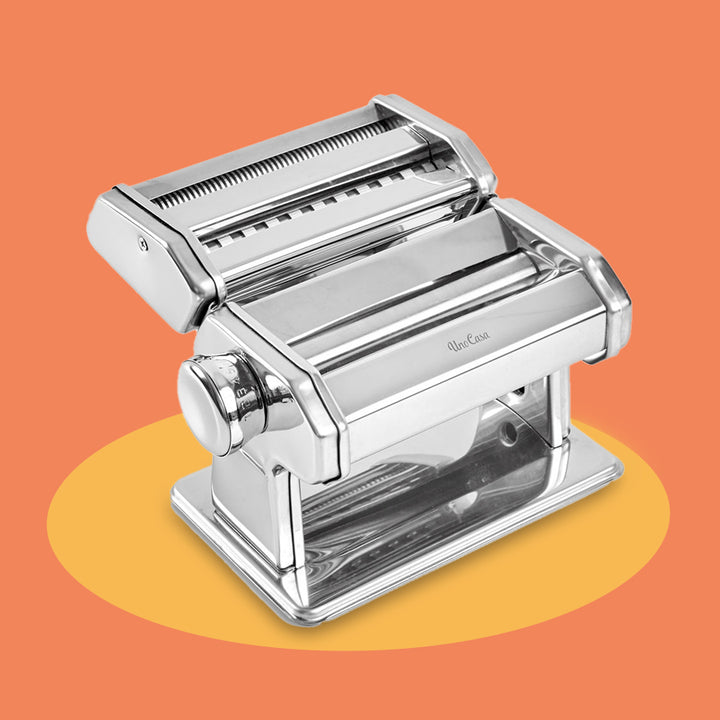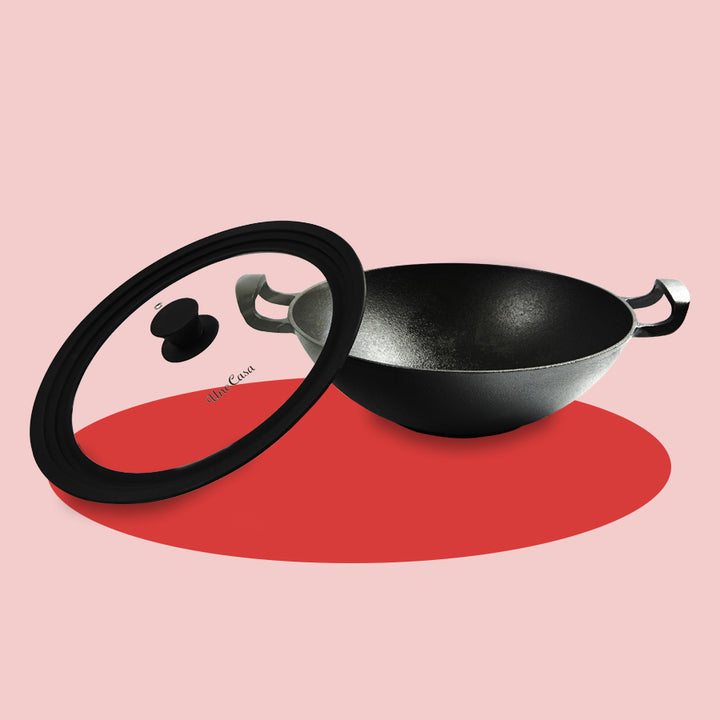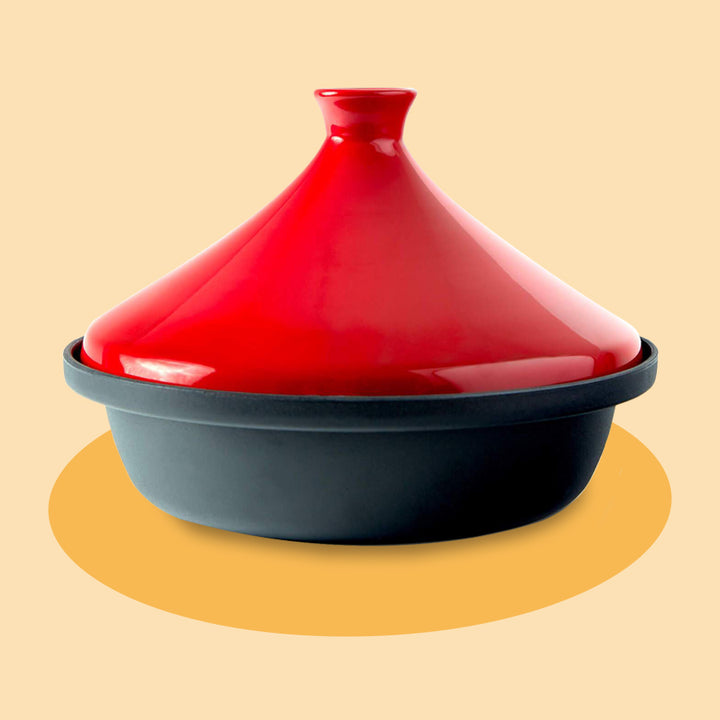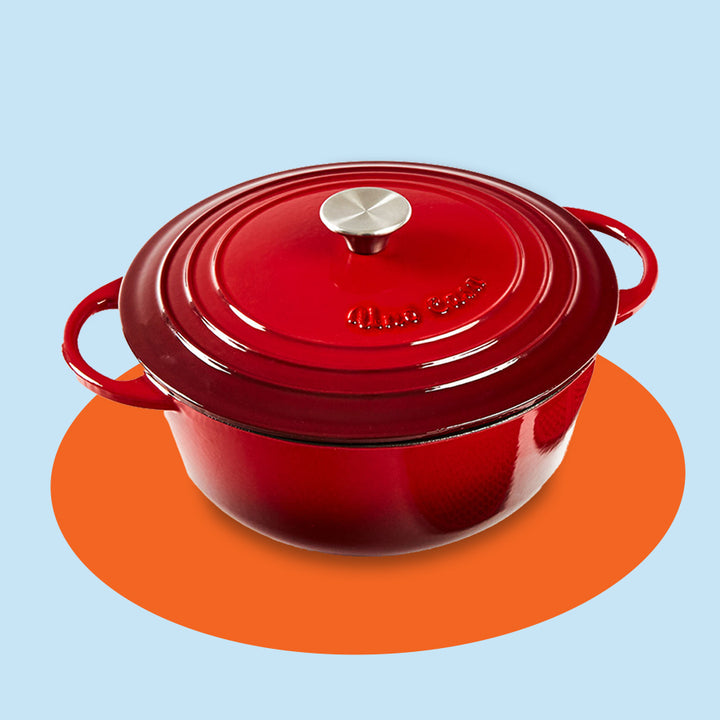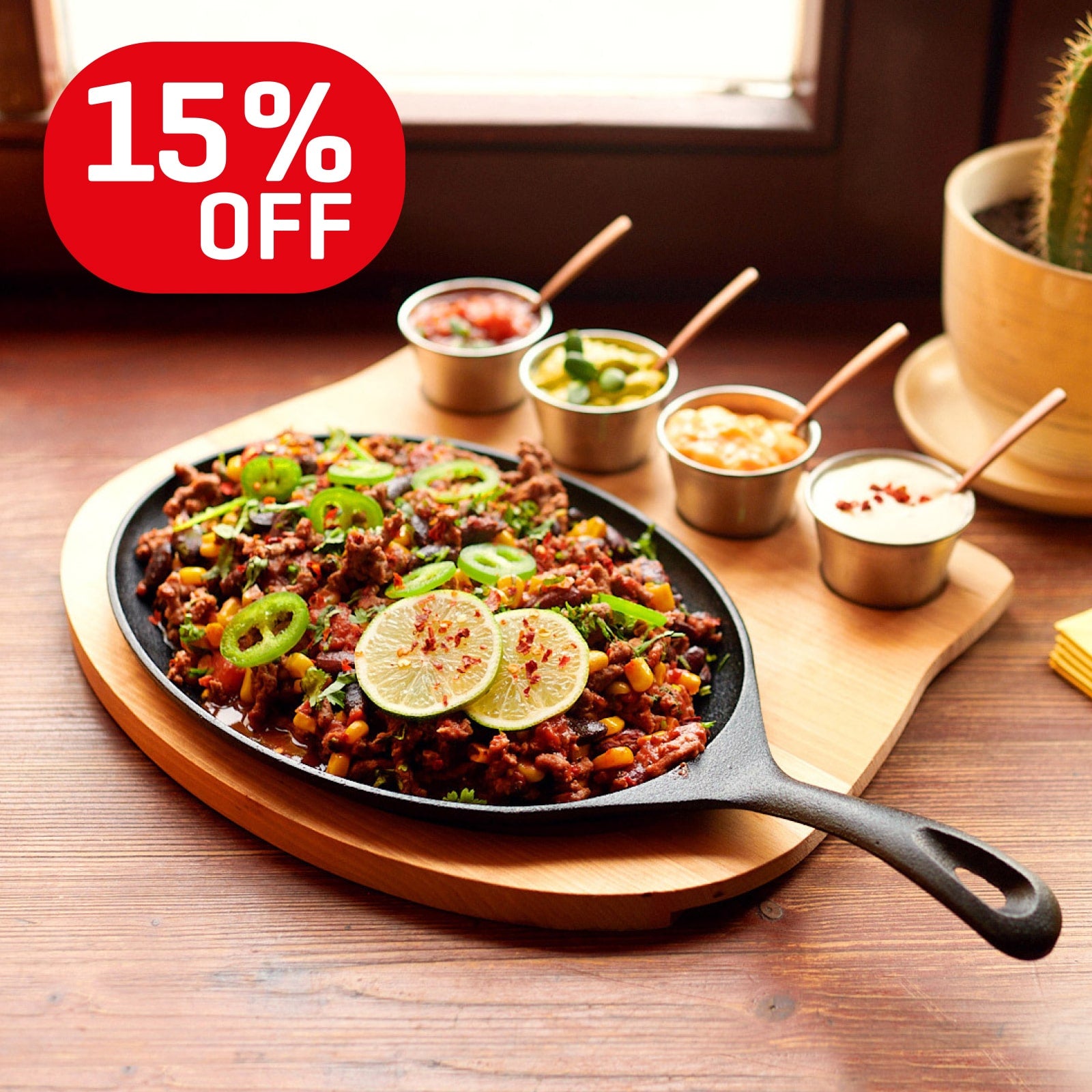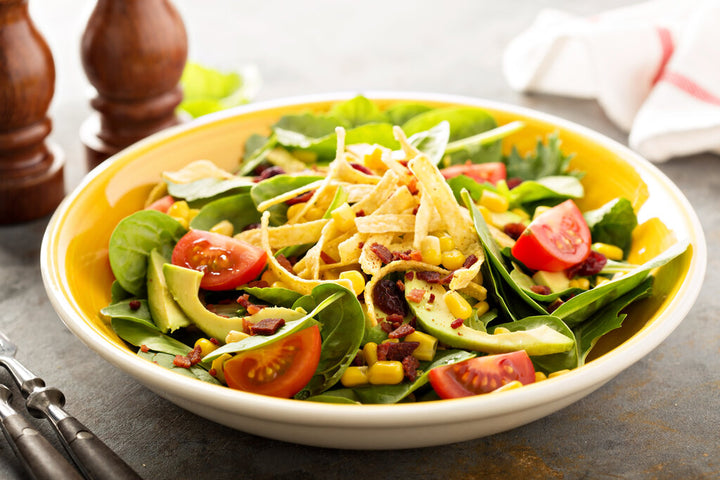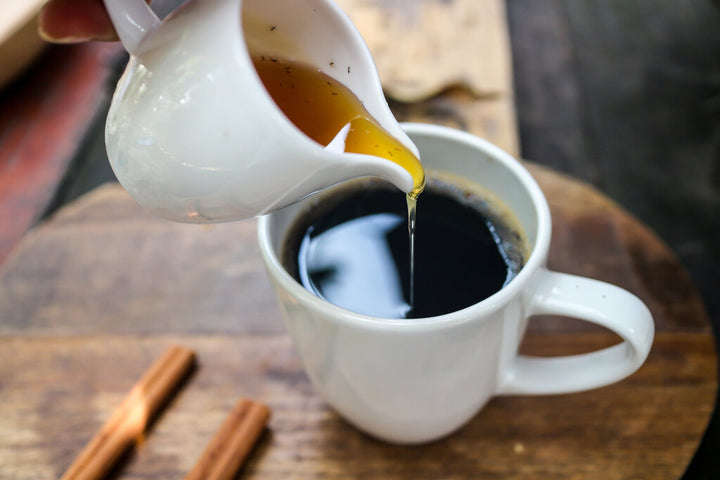Cast Iron Skillet on Grill: 11 Great Reasons Why + Best Tips for Skillet Grilling

Cast-iron cookware has helped us to create perfectly-seared meals for a few thousand years, but is the Iron Age finally over? Absolutely not! This cookware's adaptability is undeniably timeless - read below to learn why and how you can transfer your cast-iron skillet from the stovetop and over to an outdoor grill with some deliciously smoky results!
The modern gadgetry of outdoor grilling is pretty advanced these days - did you know that Bluetooth-enabled pellet cookers exist? And while we're not here to knock the advancing tech, we don't think it's at all necessary to BBQ success.
Cast-iron cookware is some of the best stuff on the market. Even after hundreds of years, cast-iron durability stands the test of time. It's one of the most versatile cooking tools you can use on the stovetop, in the oven, and even on a BBQ or grill in the open flame.
Better yet, you don't need to spend hundreds or thousands of dollars to invest in some pieces. For example this cast iron skillet can easily last over 100 years with proper care.
Read more below about why you should try out cast-iron for grill cooking and how to use a cast-iron skillet on the grill for the best burgers, steaks, and smoky veggies.
What's so Great About Cast-Iron Cookware?
The benefits of cast-iron skillet cooking are plentiful - here are a few reasons it's our favorite:
- It's tough as nails. Unlike many new products, they build cast-iron to last with a few simple care techniques.
- Care is easier than you think. People talk of ruined cast-iron often, but the truth is, it's quite difficult to destroy a cast-iron pan. The care to keep the seasoning intact is straightforward once you know what you're doing, and in most cases, even if something goes wrong, a pan can be re-seasoned with a little work.
- It can survive in scorching temperatures. It's safe to sit in direct flames without the worry of melting or combustion. The hot temperatures also make it the go-to choice for searing meats perfectly.
- It holds heat for a very long time. You can use a cast-iron skillet to keep foods warm long after it's off the heat, which means you can go back for warm seconds (or thirds…).
- They get even better over time. Your cast-iron seasoning will become better over time and use when appropriately treated.
- They add a little iron to your food. It's a small amount of iron that leaches from the pan into your food, but every little bit of this essential mineral counts towards your daily intake!
- It emits radiant energy. Not only does cast-iron get very hot, but it also cooks food more evenly with radiant heat.
#1: Achieve a Mouthwatering Sear, Every Time.
Using a cast-iron skillet for pan-grilled steaks, cast-iron burgers, or other meats gives a crusty sear, as the fat stays in the pan instead of dripping through the grates.
Similar to stovetop steak cooking, your final result is juicy and flavorful, but stovetop searing presents one huge problem - a smoke-filled house that stinks for hours afterward.
Take it outside, and let that smoke waft away as you build the most delicious crust on your striploin.
#2: You Can Bake on the Grill in Cast Iron, too.
Cooking with a cast-iron skillet on the grill doesn't stop at just searing and roasting.
Though it's a tad unconventional these days, you can use your grill for baking bread, pizza, and cakes with the help of a cast-iron skillet on BBQ. Have you truly lived until you've tried a smoky skillet pizza?
Because the cast-iron skillet grills are so hot, the baking time for these items is much shorter than using a conventional oven. Be sure to preheat your cast-iron first!
#3: You'll Avoid Scorching Your Meat.
Cast-iron skillet grilling is a much cleaner way to cook than grilling straight on the grates and can help you avoid the dreaded effects of over-scorched meat.
Without a skillet, juicy meats drip straight through the grates and into the flames. These juices cause flare-ups that can burn the outside of your food before the inside thoroughly cooks.
#4: Keep a Better Eye on Tiny Morsels.
While grilling corn on the cob directly on the grill grates is relatively simple, tiny veggies like cherry tomatoes or small, chopped vegetables will slip and fall straight through the grates, and grill baskets can be messy and cause lots of flare-ups.
Grilling with cast-iron allows you to keep these tiny foods exactly where they should be while imparting them with smoky aromas and keeping them moist.
#5: Keep Your Burgers and Steaks Perfectly Moist.
Place your cast-iron pan on the grill even when you're making BBQ grilled classics, like the hamburger.
While we love a grill-marked burger as much as the next person, we love something else even more - burgers in cast-iron.
We don't want to lose the deliciously fatty juices into the abyss below the grates - keep them in your burger with the cast-iron pan, and you’ll also get a perfectly seared exterior. We're telling you; once you try a cast-iron skillet burger, you won’t turn back!
#6: Stuck-On Food Will Be a Problem of the Past.
Ah, we've come to the ultimate advantage of cast-iron - a non-stick seasoning that doesn't contain any weird or harmful chemical compounds (we're looking at you, Teflon!).
While you can oil a grill before you start cooking, the oil disappears from the hot grill in record time. If the oil is uneven, it can cause a sticky, crumbly mess.
Another plus is that a well-seasoned pan won't need nearly as much oil, which can significantly lower each meal's calorie and fat content.
#7: Make Naturally Smoked Sauces.
Tossing a sauce directly on the grill would be a hilarious yet ultimately unsuccessful venture that we don't recommend you try.
You can use a cast-iron on grill grates to hold and heat any sauce you'd like while infusing it with some extra-smoky flavor. Yum!
#8: Swap From High to Low Cooking in a Flash.
Outdoor cast-iron cooking provides so much versatility within the cooking process, which is especially helpful with uneven cooking temperatures that come with gas-powered grills.
You can place your cast-iron skillet directly over the flame to heat, and as its heat retention is unparalleled, you can rest assured that the pan will cook evenly whether working on a direct or indirect heat source.
#9: Use It As a Food Warmer.
If your grill is stuffed full of different foods at your next BBQ, you can use a cast-iron skillet, kept as far from the heat source as possible, to keep your cooked foods warm as you wait for the other ones to catch up.
Food won't dry out or burn, especially if you pour in a small amount of broth periodically as the pan on the grill remains nice and hot.
#10: Your Cast-Iron Can Handle the Fire.
While you can easily place your cast-iron on a gas grill or grill grate in a fire, you can also place your pan directly in the coals. On open flames, this means you can have a fantastic set-up - place a cast-iron pan on top of a grill grate, and another underneath the grill, for double the cooking possibilities!
#11: Cook Tender Foods That Won't Crumble.
Tender fish and seafood are a total pain to grill - its soft texture needs a load of oil to prevent leaving half of it behind when you try to flip it.
A well-seasoned cast-iron grill will naturally help to prevent sticking, making it the perfect fit for grilling even the most delicate foods.
Final Notes: Maintenance and Cleaning after Grilling with a Cast-Iron Skillet
One essential piece of maintenance to remember when using a cast-iron skillet on grill grates regularly is to watch for signs of wear from prolonged high-temperature cooking.
While your cast-iron can withstand those high temperatures, you'll want to oil and season your cast-iron pan more often than the pieces that are most used in the oven and on the stovetop.
Done well, your skillet will last you a whole lifetime and your kid's lifetime too!
Leave a comment
Comments will be approved before showing up.
Also in Tips
